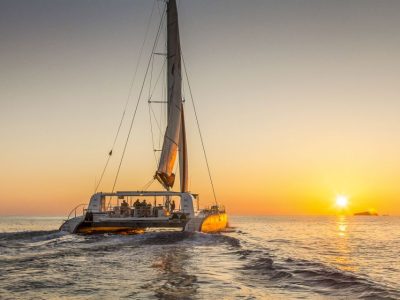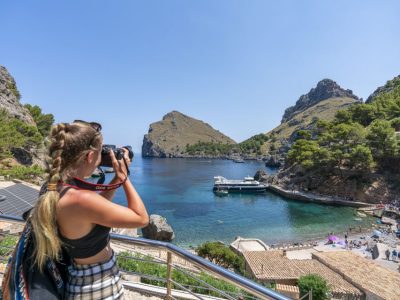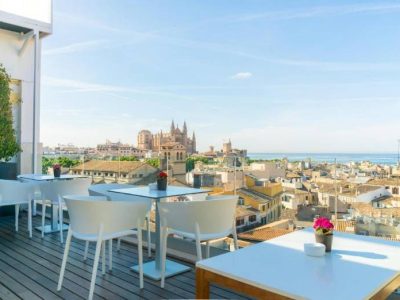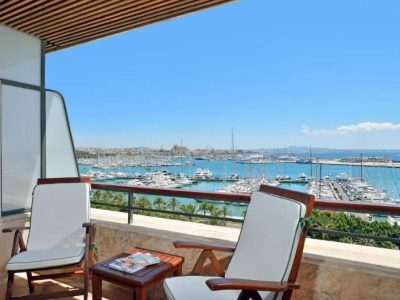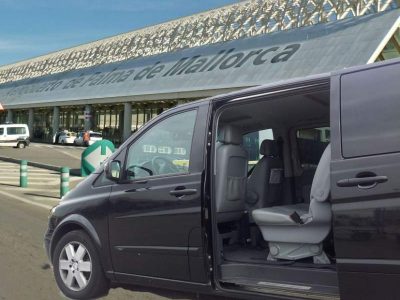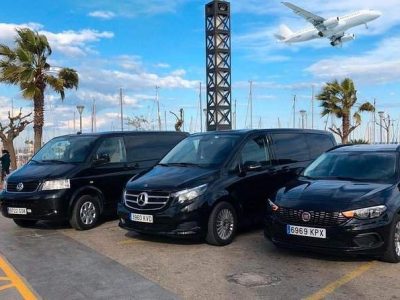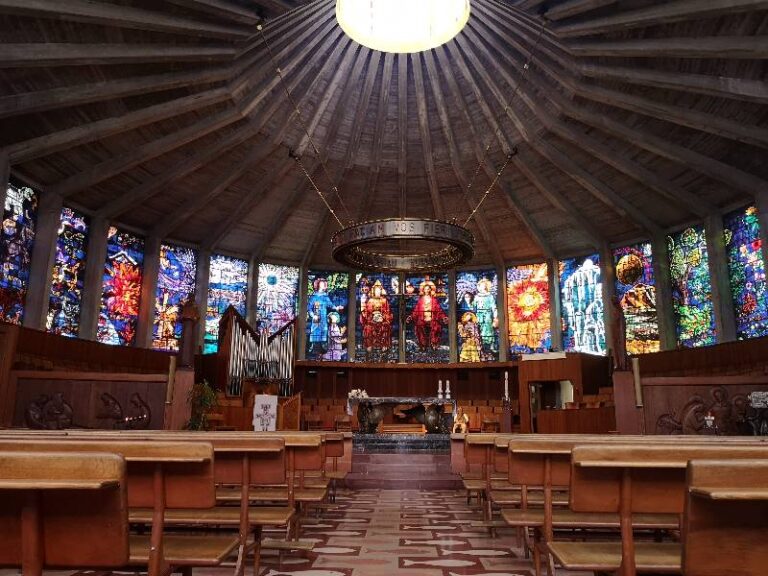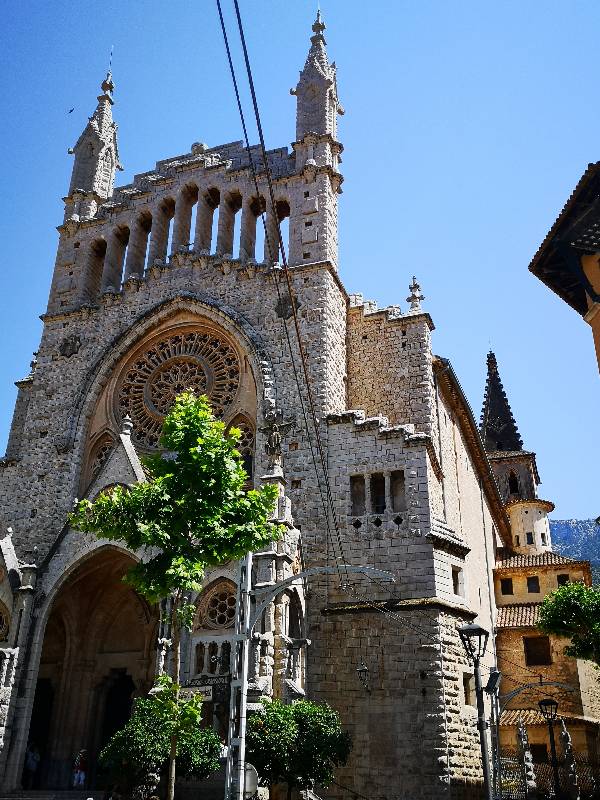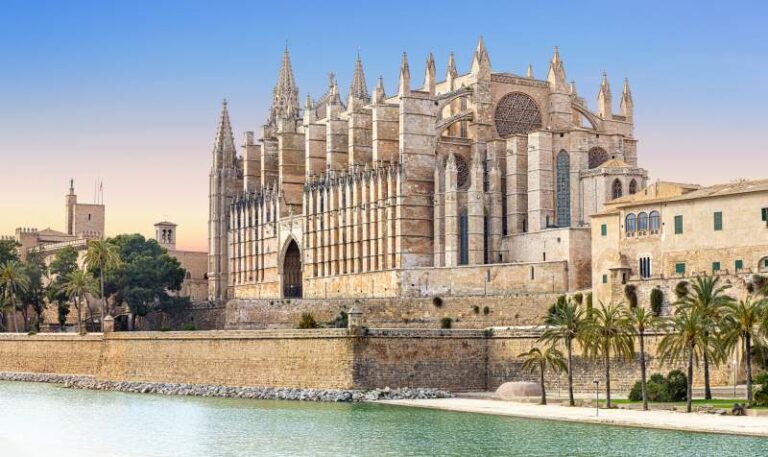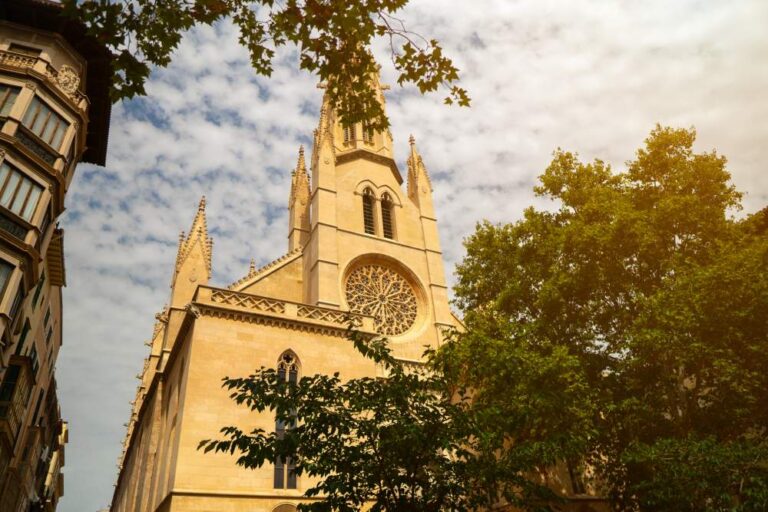All your holiday planning needs in one place, letting you book direct and benefit from official online rates
- Places To Go
- Things To Do
What’s Your Interest?
Traveling with kids
- Blog
Esglesia de Santa Creu
Categories:

FEATURED EXPERIENCE
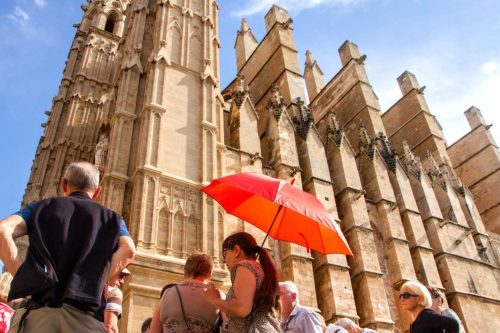
Guided tour of Palma's stunning old town for groups
From: €195
- Lowest Online Rates
Visit the church of Santa Creu in Palma
This church is one of the four first Catholic churches built in Palma, along with the churches of Santa Eulalia, Sant Miquel and Sant Jaume.
The works of the church began in 1335, and completed in 1371. The church was later expanded in 1440, which is evidenced in a document from this time speaking of the arising of ‘the new church’.
You can explore this massive church not far from the art museum of Es Baluard close to the beautiful harbour area in Palma.
Architecture of the Santa Creu church
With dimensions of 26 meters in width and a length of 48 meters, this church must have been given some special status.
Interesting things to notice on the exterior of the church, is the main facade which is left unfinished, and the highly detailed entrance at the northern side of the church on Carrer de Santa Creu.
This entrance on the north side, pays special tribute to Santa Helena, mother of Emperor Constantine the Great. There are much signs that this entrance, is constructed in the 1500’s because of its Mannerism style, which was an answer to the Renaissance style’s order and balance. In Mannerism stylistics, the artworks and sophistication was favored over symmetrical balance. This style, was especially associated with Italian culture and Michelangelo is/was best associated with it.
Special interest in the Santa Creu church
1. The main organ, is the third biggest organ on Mallorca. It has 4 keyboards in 3 levels with 30 pedals. The work of the organ began in 1760 by Damià Caimari, but he did not managed to finish it before his death. In the late 19th century, Julià Munar completed the organ, adding the third keyboard to it. Between 2011 – 2015, the Flemish organ builder Wilfried Praet, had the honour of improving and rebuilding the massive instrument, where he then added the fourth keyboard.
2. The main Baroque altarpiece by famous artist Gabriel Mòger from the 16th century, containing images of Santa Helena, Virgin of Carmen and a table of Our Lady of Good Ways.
3. The third chapel on the left, is dedicated to the Heart of Jesus. In this chapel is the tomb of Antonio Barceló, known as Captain Barceló, a famous admiral of the Spanish royal nay. He was the inventor of the gunships used during the Siege of Gibraltar in 1779. He is often times referred to as ‘bravest being’.
4. The crypt of Sant Llorenç, a knight of king Jaume I during the conquest of Mallorca.


